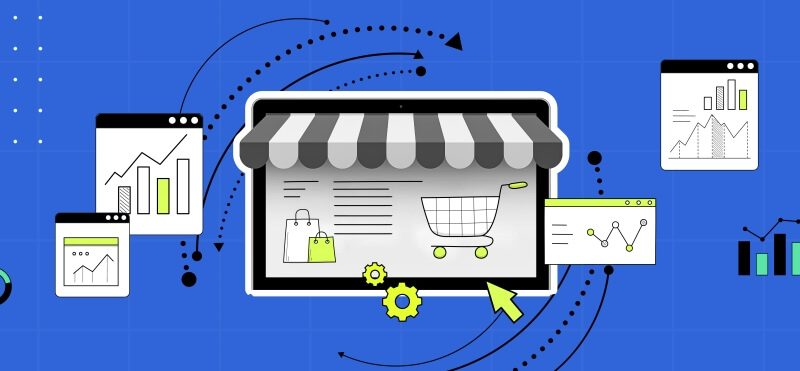As businesses continue to grow and evolve, it’s becoming increasingly important to keep track of every aspect of the product lifecycle. This is where Product Lifecycle Management (PLM) software comes into play. PLM software is a powerful tool that allows businesses to manage every stage of their product development cycle, from ideation to production and beyond. Whether you’re a small business owner or a CEO of a large corporation, understanding the basics of PLM software can revolutionize the way you do business.
In this beginner’s guide, we’ll explore everything you need to know about PLM software, including its benefits, features, and how it can help streamline your entire product development process. So, if you’re ready to take your business to the next level, let’s dive into the world of PLM software and discover how it can transform the way you work.
What is Product Lifecycle Management (PLM) software?
Product Lifecycle Management (PLM) software is a powerful tool that helps businesses manage the entire lifecycle of their products, from ideation to retirement. It facilitates the collaboration between different teams and departments involved in the product development process, enabling them to work together seamlessly. PLM software helps businesses streamline the product development process, reduce costs, and improve product quality.
It also provides a centralized platform for managing product data, including design files, bills of materials, and manufacturing instructions. This data is critical for ensuring that the product is designed and manufactured to meet the required specifications. PLM software helps manage product changes, ensuring that any alterations are properly documented and approved before being implemented.
Benefits of using PLM software for businesses
There are several benefits of using PLM software for businesses, so let’s review them.
Improved collaboration: PLM software facilitates different teams involved in the product development process to work together in a more coherent manner. This helps businesses reduce errors, improve communication, and accelerate the product development process.
Increased efficiency: by automating manual tasks and providing a common platform for managing product data businesses can bring products to market faster.
Better product quality: when businesses use PLM software, they can ensure that the product design and manufacturing process meet their required criteria. This helps improve product quality and reduce the risk of product recalls.
Reduced costs: by streamlining the product development process, reducing errors, and improving efficiency, businesses can bring products at a lower cost.
Improved customer satisfaction: by improving product quality businesses are able to meet customer demands and increase customer satisfaction.
Find out more about business process automation software.
Key features of PLM software
PLM software includes a wide range of features, including:
- Product data management
- Collaboration tools
- Workflow automation
- Analytics and reporting
- Integration with other software solutions
The stages of the product development cycle
The product development cycle consists of several stages. Let’s look closer at each of the stages and find out what types of operations and tools will be best suited for each.
Ideation
The ideation stage involves generating ideas for a new product or improving an existing product. This stage involves market research, brainstorming, and concept development.
Design
The design stage involves creating a detailed design of the product, including the product’s form, fit, and function. In this stage, computer-aided design (CAD) software and other design tools are usually used.
Development
The development stage involves creating a physical prototype of the product and testing it for functionality and performance. In the development stage, you’ll be performing rapid prototyping and using various testing tools.
Manufacturing
The manufacturing stage involves producing the product at scale. In this stage, you’ll be aided by manufacturing tools and equipment, as well as quality control and testing tools.
Launch
The launch stage involves introducing the product to the market. This stage consists of marketing and advertising, as well as distribution and sales.
Service and support
The service and support stage involves providing customer service and support for the product. Here, you’ll be training your team using customer support tools and resources.
PLM software vs. other software solutions
PLM software is different from other software solutions, such as enterprise resource planning (ERP) software and computer-aided design (CAD) software.
ERP software manages the business processes and operations of an organization, while PLM software manages the product development process. When CAD software is used for creating product designs, PLM software manages the entire product lifecycle.
Therefore, it’s best when your chosen PLM software can be integrated with ERP software and CAD software, providing your business with a complete solution for managing the product development process.
Choosing the right PLM software for your business needs
Choosing the right PLM software for your business needs requires careful consideration of several factors:
- Industry-specific features: ensure that your PLM software includes features that are specific to your industry and business needs. For example, PLM software for the automotive industry may include features such as vehicle configuration management, while PLM software for the fashion industry may include features such as color and material management.
- Scalability: the software should be scalable to meet the needs of your business as it grows and evolves.
- Integration with other software solutions: the ability to integrate with other software solutions, such as ERP software and CAD software will help you further improve the process.
- User-friendliness: make sure the software is easy to use and user-friendly, with a simple and intuitive interface.
- Cost: your chosen PLM software should be cost-effective and provide a good return on investment (ROI).
Implementing PLM software in your organization
Implementing PLM software in your organization requires careful planning and execution. And here we present best practices for implementing PLM software in your organization:
- Define your goals and objectives for implementing PLM software, and align them with your business strategy.
- Choose the right PLM software for your business needs, taking into consideration factors such as industry-specific features, scalability, integration with other software solutions, user-friendliness, and cost.
- Train your team on how to use the PLM software effectively, and provide ongoing support and training.
- Monitor and evaluate the effectiveness of the PLM software, and make adjustments as needed to ensure that it is meeting your business needs.
Best practices for using PLM software effectively
Once you choose PLM software for your business, the main part only begins – how to integrate the software into your current operations. So here are some best practices for using PLM software effectively:
- Standardize your product development processes and ensure that everyone in your organization is following them.
- Use analytics and reporting tools to track key performance indicators (KPIs) and identify areas for improvement.
- Encourage collaboration between different teams and departments involved in the product development process. This helps reduce errors and improve communication.
- Automate manual tasks, such as change requests and approvals, to reduce errors and improve efficiency.
- Stay up-to-date with the latest PLM software updates and features, and take advantage of them to improve your product development process.
Conclusion: The Future of PLM software in Business
PLM software is a powerful tool that helps businesses manage the entire lifecycle of their products, from ideation to retirement. By streamlining the product development process, reducing costs, improving product quality, and bringing products to market faster, PLM software can revolutionize the way businesses operate.
As technology continues to advance and businesses become increasingly global, the demand for PLM software is only going to grow. So, if you’re ready to take your business to the next level, consider implementing PLM software and see the difference it can make.

.png)




